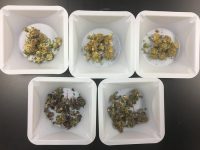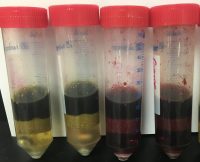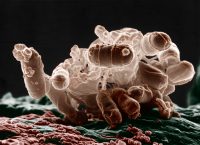Ultimately, the goal of any good company is to take care of their customers by providing a quality product at a competitive price. You take the time to use good practices in sourcing raw materials, processing, testing and packaging to make sure you have a great final product. Yet in practice, sometimes the product can degrade over time, or you find yourself facing costly manufacturing stoppages and repairs due to downed equipment or instrumentation. This can harm your company’s reputation and result in real, negative effects on your bottom line.
One thing you can do to prevent this problem is to have a properly scaled calibration and maintenance program for your organization.
First, a short discussion of terms:
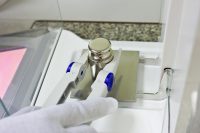
Calibration, in the context of this article, refers to the comparison of the unit under test (your equipment) to a standard value that is known to be accurate. Equipment readings often drift over time due to various reasons and may also be affected by damage to the equipment. Periodic calibration allows the user to determine if the unit under test (UUT) is sufficiently accurate to continue using it. In some cases, the UUT may require adjustment or may not be adjustable and should no longer be used.
Maintenance, in the context of this article, refers to work performed to maximize the performance of equipment and support a long life span for the equipment. This may include lubrication, adjustments, replacement of worn parts, etc. This is intended to extend the usable life of the equipment and the consistency of the quality of the work performed by the equipment.
There are several elements to putting together such a program that can help you to direct your resources where they will have the greatest benefit. The following are some key ingredients for a solid program:
Keep it Simple: The key is to scale it to your operation. Focus on the most important items if resources are strained. A simple program that is followed and that you can defend is much better than a program where you can never catch up.
Written Program: Your calibration and maintenance programs should be written and they should be approved by quality assurance (QA). Any program should include the following:
- Equipment Assessment and Identification: Assess each piece of equipment or instrument to determine if it is important enough to be calibrated and/or requires maintenance. You will probably find much of your instrumentation is not used for a critical purpose and can be designated as non-calibrated. Each item should have an ID assigned to allow tracking of the maintenance and/or calibration status.
- Scheduling System: There needs to be some way to schedule when equipment is due for calibration or maintenance. This way it is easy to stay on top of it. A good scheduling system will pay for itself over time and be easy to use and maintain. A web-based system is a good choice for small to mid-sized companies.
- Calibration Tolerance Assignment: If you decide to calibrate an instrument, consider what kind of accuracy you actually need from the equipment/instrument. This is a separate discussion on its own, but common rule of thumb is that the instrument should be at least 4 times more accurate than your specification. For very important instruments, it may require spending the money to get a better device.
- Calibration and Maintenance Interval Assignments: Consider what interval you are going to perform maintenance for each equipment item. Manufacturer recommendations are based on certain conditions. If you use the equipment more or less often than “normal” use, consider adjusting the interval between calibrations or maintenance.
- OOT Management: If you do get an Out of Tolerance (OOT) result during a calibration and you find that the instrument isn’t as accurate as you need. Congratulations! You just kept it from getting worse. Review the history and see if this may have had an effect since the last passing calibration, adjust or replace the instrument, take any other necessary corrective actions, and keep it up.
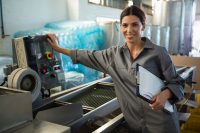
Figure 2- Maintenance engineers help keep your systems running smoothly and within specification for a long, trouble-free life. - Training: Make sure personnel that use the equipment are trained on its use and not to use equipment that is not calibrated for critical measurements. Also, anyone performing calibration and/or maintenance should be qualified to do so. It is best to put a program in place as soon as you start acquiring significant equipment so that you can keep things running smoothly, avoid costly repairs and quality control problems. Don’t fall into the trap of assuming equipment will keep running just because it has run flawlessly for months or years. There are many bad results that can come of mismanaged calibration and/or maintenance including the following:
- Unscheduled Downtime/Damage/Repairs: A critical piece of equipment goes down. Production stops, and you are forced to schedule repairs as soon as possible. You pay premium prices for parts and labor, because it is an urgent need. Some parts may have long lead times, or not be available. You may suffer reputational costs with customers waiting for delivery. Some calibration issues could potentially affect operator safety as well.
- Out of Specification Product: Quality control may indicate that product is not maintaining its historically high quality. If you have no calibration and maintenance program in place, tracking down the problem is even more difficult because you don’t have confidence in the readings that may be indicating that there is a problem.
- Root Cause Analysis: Suppose you find product that is out of specification and you are trying to determine the cause. If there is no calibration and maintenance program in place, it is far more difficult to pinpoint changes that may have affected your production system. This can cause a very significant impact on your ability to correct the problem and regain your historical quality standards of production.
A solid calibration and maintenance program can go a long way to keeping your production lines and quality testing “boring”, without any surprises or suspense, and can allow you to put more sophisticated quality control systems in place. Alternatively, an inappropriate system can bog you down with paperwork, delays, unpredictable performance, and a host of other problems. Take care of your equipment and relax, knowing your customers will be happy with the consistent quality that they have become accustomed to.





















